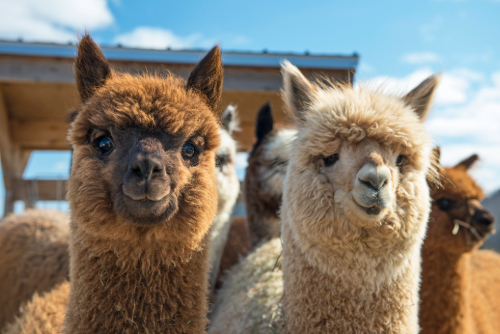Exploring nature's relationships in guts, flowers and lungs
Posted on July 1, 2024 by Clare Baker
Each month, the Microbiology Society publishes the International Journal of Systematic and Evolutionary Microbiology, which details newly discovered species of bacteria, fungi and protists. Here are some of the new species that have been discovered and the places they've been found.
Well, even if we try to avoid it, the Euros are happening at the moment, so I’ve done my best to try and find a novel football-related microbe in this edition of ‘New to Science’. The best I could do is Nocardioides agri, a bacterial strain isolated from garden soil – because that’s where you might play football, right? The colonies were beige in colour, smooth and spherical when grown on agar (much like a football…) and were isolated from soil sampled in a flower garden in Anseong, Republic of Korea.
We’re moving on from football to a recurring favourite of New to Science, the bumble bee, with our next new microbe. Eupransor demetentiae is a novel fructophilic (preferring fructose over glucose for growth) lactic acid bacteria isolated from a Bombus lapidarius gut sample. Fructophilic lactic acid bacteria unsurprisingly inhabit fructose-rich environments such as flowers, fruit surfaces and fermented fruits. The association with bumble bees isn’t the only cute thing about this new microbe, its name literally means ‘a good guest’: Eupransor derives from 'eû', meaning good and 'pransor', meaning lunch guest – adorable!
Talking of insect guts brings me on to my next microbe. Paraburkholderia largidicola is a novel Gram-negative, aerobic, rod-shaped bacteria isolated from the midgut crypts of the bordered plant bug, Physopelta gutta. It joins several other symbionts isolated from the gut of stink bugs in the genus Paraburkholderia, whose members have been found to have beneficial effects on plants through nitrogen fixation.
You must have learned enough about bacteria now, so let’s take a look at a new species of yeast. Wickerhamiella lachancei was found in the nectar of Lantana camara flowers in India. As you may already know, plants and pollinators have a brilliant mutualistic relationship. Flowers attract pollinators by providing sugar, and in return, the pollinators work hard to transport pollen between plants. This isn’t the only mutualistic relationship happening here, however. Microbes get in on the fun too. Microbes residing in the nectar possess the capability of modifying its chemistry, adjusting the composition and quantity of sugars and amino acids, influencing the foraging behaviour of pollinators. In return, the microbes rely on the pollinators for their dispersal to various habitats.
We’re finishing with something familiar this month: the human body. Nocardia implantans is a novel actinomycete bacteria isolated from sputum samples of a patient in China with a pulmonary infection. Unfortunately, while the novel bacterium was new to us, it was not new to antibiotics, as susceptibility testing indicated that the strain was resistant to amoxicillin–clavulanic acid and tigecycline.
Another new strain was also identified in humans this month. During a study focusing on isolating novel Faecalibacterium from human faeces, researchers did exactly that. Faecalibacterium taiwanense is a new member of the genus that was isolated from faecal samples of two healthy Taiwanese adults. Faecalibacterium are part of another special relationship: they are prevalent in the human gut and play an important role in maintaining human gut health. The levels of Faecalibacterium are frequently reduced in diseases linked to gut inflammation such as inflammatory bowel disease and colorectal cancer.

We’re sticking with poo for our final novel microbe. Clostridium tanneri is a new bacterium isolated from the faeces of a domesticated alpaca on a privately owned alpaca ranch near Newcastle, Oklahoma, USA. It is named after Ralph S. Tanner, a contemporary American microbiologist for his many contributions to the field of anaerobic microbial cultivation.

